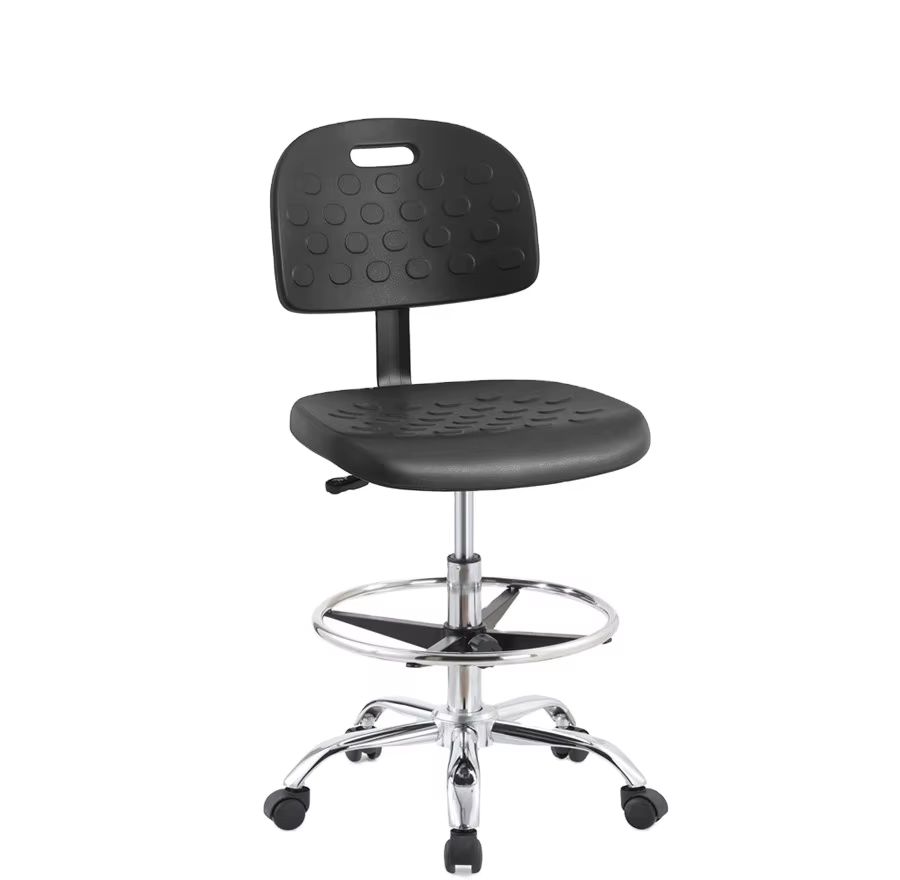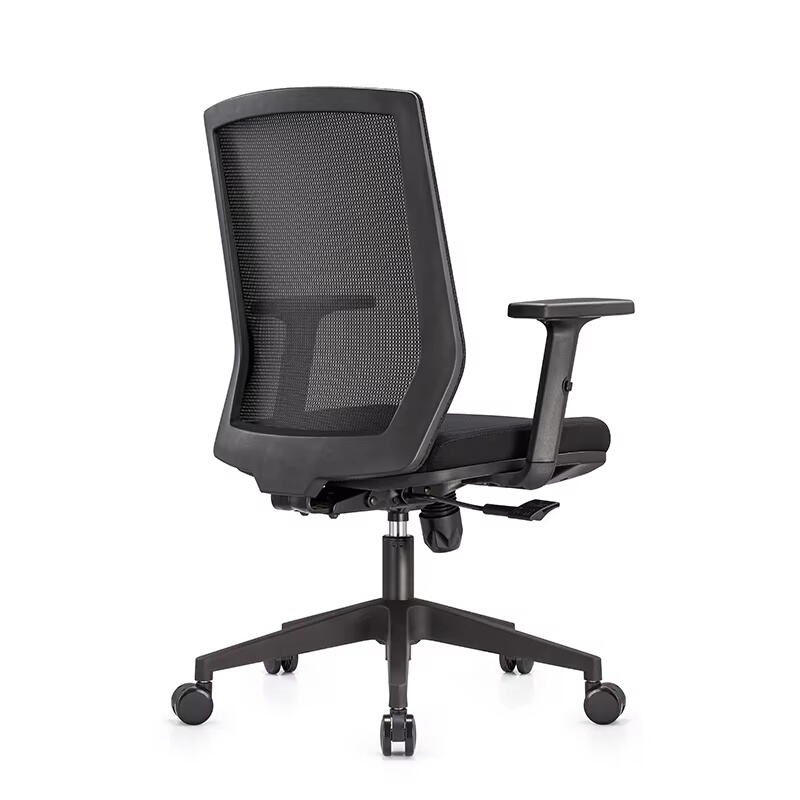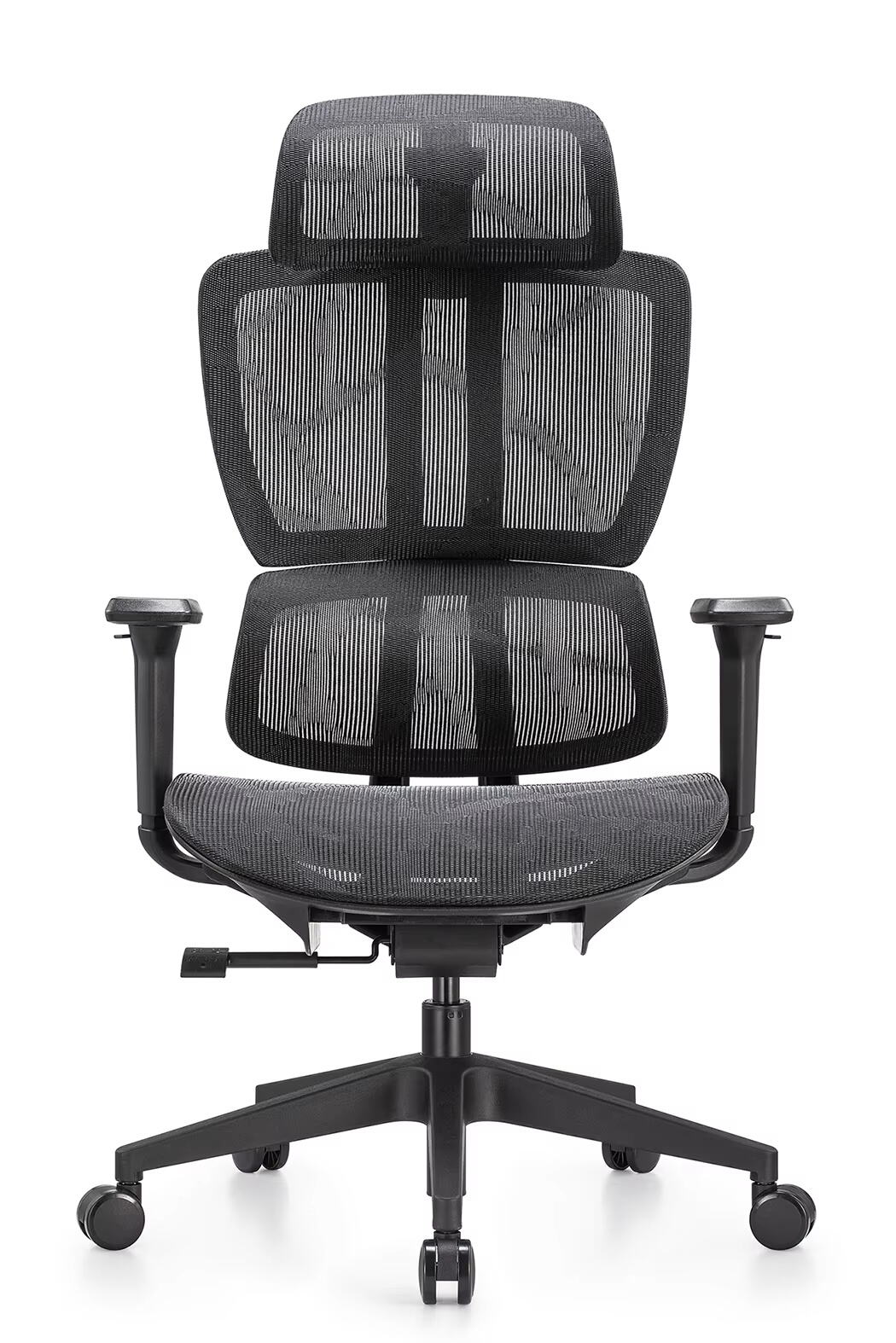
Health Benefits of Ergonomic Office Chairs
Posture Improvement and Spinal Alignment
Office chairs that follow ergonomic design principles help improve posture by keeping the spine in a neutral position something really important for overall posture maintenance. These types of chairs support the natural curves of the back while also cutting down on muscle fatigue throughout the day. When our spines stay properly aligned, we avoid those common posture problems that plague so many people who sit at desks all day long. Studies show around 60 percent of folks working in offices complain about back pain and neck stiffness caused mainly by sitting incorrectly. Investing in a good quality ergonomic chair makes sense then, as it plays a big part in protecting spinal health over the long run, helping reduce daily discomfort and maybe even stopping serious issues from developing later on.
Reducing Neck and Back Pain
Ergonomic chairs are designed to tackle those annoying neck and back issues so many office workers deal with day after day. Most models come with adjustable backrests and built-in lumbar support that actually helps take pressure off those trouble spots. According to research from the American Physical Therapy Association, people who switched to these specialized chairs reported feeling much better after just a few weeks. Regular office chairs tend to push our bodies into awkward angles that nobody wants to maintain for hours on end. People who've made the switch talk about how comfortable they feel now, and most notice their old pain problems disappearing pretty quickly. This real world feedback shows why ergonomic designs work so well when used daily at desks across the country.
Enhanced Blood Circulation
One major plus of ergonomic office chairs? They actually help with blood circulation, something that tends to suffer when someone sits too long at their desk. The adjustable features let people find positions that don't pinch blood vessels in weird ways. Better blood flow matters beyond just feeling good physically. Most workers notice they think clearer and get more done throughout the day when circulation isn't restricted. Studies from places like the Mayo Clinic back this up, showing that proper seating arrangements really do speed up mental processes and generally make folks feel better. For best results, most office workers should take short walks around the office every hour or so, maybe switch to standing at their desk periodically. These little movements combined with a decent chair setup create a much healthier work environment overall.
Implementing these chairs can transform the work environment into a healthier, more comfortable space, fostering both productivity and well-being.
Ergonomic Features That Transform Workspaces
Adjustable Lumbar Support Systems
Lumbar support that adjusts is really important when choosing an office chair because different people have different body shapes and sizes. Good adjustable support makes sitting much more comfortable while keeping things ergonomic. Most professionals who study workplace health will tell us that proper lumbar support helps reduce those nagging lower back pains so many office workers deal with daily. The Occupational Safety and Health Administration points out something pretty straightforward actually - when our chairs keep our spine in its natural curve, we experience less strain and are less likely to get hurt. On the flip side, chairs without decent lumbar support tend to let us slump forward which leads to all sorts of back issues down the road. Anyone who's sat in both kinds of chairs knows there's just no comparison in terms of day to day comfort or how our backs feel after hours at the desk.
Office Chair with Footrest Integration
Adding a footrest to an office chair really makes a world of difference for comfort levels and proper sitting posture. When someone has something to rest their feet on, blood flows better because they can shift positions now and then instead of staying locked in one spot all day. That helps avoid those annoying leg cramps and swollen ankles after work hours. People who actually use these chairs tend to mention how much nicer it feels when sitting for long stretches, especially during marathon project deadlines. Lucas Kim, who works as an ergonomics expert, says something similar: "Footrests take some weight off the thighs and help people sit straighter." Without that support, though, sitting becomes problematic over time. The legs get too much pressure, leading to tired muscles and even issues like varicose veins developing down the road.
Breathable Mesh vs. Leather Office Chair Materials
Picking out an office chair material boils down mostly to breathable mesh versus leather these days, both having their own strengths. Mesh options really shine when it comes to staying cool and comfortable, especially useful if someone sits through hot summer days at their desk. The mesh lets air circulate so people don't end up sweating on their seats all afternoon. Leather chairs on the other hand scream luxury and class, fitting right into any boardroom or executive office setting. But there's a catch with leather too. It needs regular cleaning and conditioning, plus tends to trap heat making long meetings uncomfortable. Looking at things practically, mesh generally costs less upfront and holds up better over time for folks who care more about getting value than looking fancy. Still plenty of professionals gravitate toward leather despite the extra work involved, simply because nothing says success quite like sitting in genuine leather.
Cost-Effectiveness and Long-Term Value
Cheap Office Chairs vs. Ergonomic Investments
Looking at office chairs, many people overlook how those upfront savings on cheap models might actually cost more down the road. Poor support often means workers end up uncomfortable or in pain throughout their day, forcing them to take more breaks and work less efficiently. Research points to ergonomic chairs lasting much longer while helping maintain worker health, which cuts down on medical bills over years. Companies that spend money on good quality seating typically see real returns through better posture and less physical strain among staff members. Some studies link proper ergonomic setups directly to lower back injury claims, so even though these chairs come with higher price tags initially, they tend to pay for themselves eventually when looking at all the indirect costs saved.
Durability of Home Office Chair Designs
How long a home office chair lasts matters a lot, particularly if someone sits at it all day every day. Most people know this already, which explains why many manufacturers offer extended warranties on chairs with solid build quality. Take companies such as SAVYA HOME and ErgoSmart for instance they market products built to handle regular sitting sessions without losing support features that keep posture healthy over months and years. Looking at maintenance requirements tells part of the story too. Budget friendly models tend to break down faster, needing fixes or complete replacement after just a few months. Premium ergonomic chairs typically come with parts made to last longer, so there's less hassle down the road. Anyone who has dealt with replacing cheap office furniture knows firsthand how expensive those short term savings can become in the end.
Boosting Productivity Through Comfort
Reducing Fatigue in Office Desk Chair Setups
Getting the right office chair setup makes all the difference when it comes to staying comfortable at work and getting stuff done without feeling exhausted. Research points to ergonomic chairs making workers more productive because they cut down on aches and pains after sitting for hours on end. Take lumbar support for example it really matters for keeping the back in good shape, plus being able to adjust how high the seat sits helps prevent those annoying leg cramps everyone gets. Most people find that adding some extra touches works wonders too. A monitor stand that lets them position screens properly and maybe an ergonomic keyboard can take comfort to another level. These small changes create a workspace where folks actually want to spend time instead of dreading every minute behind the desk.
Dynamic Sitting for Focus Enhancement
Dynamic sitting has become something of a game changer for people who spend long hours at their desks. The idea is simple really - get those minor movements happening while seated. Ergonomic chairs equipped with tilt mechanisms and adjustable settings actually help blood flow better and cut down on that annoying muscle fatigue everyone feels after sitting too long. What makes these chairs work so well? They let us shift around just enough to stay comfortable but not so much we lose our place in whatever task we're working on. Some actual research from office environments shows pretty clear results too. Workers using dynamic sitting setups reported being able to concentrate longer on projects and generally felt more productive throughout the day. It's no wonder companies are starting to see value in investing in these kinds of seating solutions for their staff.
Choosing the Right Ergonomic Office Chair
Key Measurements for Optimal Fit
When picking out an ergonomic office chair, getting the measurements right makes all the difference for comfort. The main things to check are how high the seat sits, how deep it goes back, where the backrest ends, and where the armrests land. For the seat height, adjust until both feet can touch the ground with knees bent about 90 degrees. As for seat depth, there should be space equivalent to about two or three fingers between the back of the knee and the edge of the seat cushion. These kinds of adjustments aren't just suggestions either - organizations like OSHA have been pushing for them for years because they really do help reduce discomfort after hours at the desk. Getting this stuff sorted out upfront creates a much better working environment overall.
Matching Chair Features to Work Habits
Work habits really affect what kind of chair features people need when picking out an office chair. The type of work matters a lot too. Take typing all day long versus just checking email now and then. A person who types constantly would probably get more value from adjustable armrests than someone who sits down only once in a while. Looking at real life situations makes it clear why chairs need to fit what each person actually does at their desk. There are plenty of options available if folks want extra help figuring this out. Getting an ergonomic assessment or talking to someone about seating options can lead to better choices that match both what the job requires and what feels comfortable for the individual worker. When chair features line up with actual work patterns, workplaces tend to become more functional and comfortable overall.











